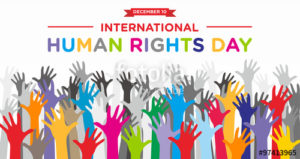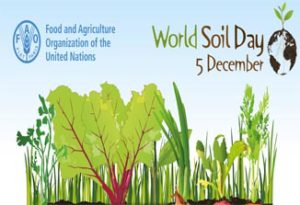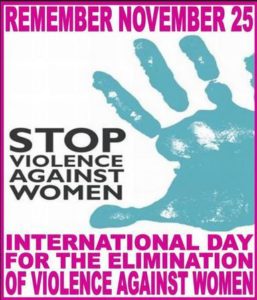Morehshin Allahyari is one of the “100 Leading Global Thinkers 2016” selected by Foreign Policy
Last year, the Islamic State released a video of militants bludgeoning a statue of King Uthal of Hatra—one example among the scores of ancient artifacts the group has destroyed in Iraq and Syria. Trying to reverse this ruin is Iranian-born artist Morehshin Allahyari, who leads Material Speculation: ISIS, a 3-D modeling and printing project that has reconstructed 12 artifacts, including the statue of King Uthal. Contained on a 570 MB Zip file are printable versions of the artworks, along with scholarly research, videos, and high-resolution images pertaining to the originals. This year, Allahyari exhibited the printed sculptures at Toronto’s Trinity Square Video; in addition, she made the King Uthal file available to the public—ensuring that the artifact, in some tangible form, isn’t lost forever. (Photo credit: GARY PAYNE/University of North Texas)
 Notable Facts:
Notable Facts:
The U.S. congressional Task Force to Investigate Terrorism Financing has heard testimony that the Islamic State could be making up to $100 million annually from the illicit trade of artifacts.
When Allahyari was 16, she published a 400-page novel based on the life of her grandmother, who grew up in Kurdistan and suffered under various gender norms that restricted her behavior and choices.
Happy Human Rights Day!
 Annually on December 10, Human Rights Day is celebrated across the world.
Annually on December 10, Human Rights Day is celebrated across the world.
Human Rights Day is observed by the international community every year on 10 December. It commemorates the day in 1948 the United Nations General Assembly adopted the Universal Declaration of Human Rights.
This date honors the December 10, 1948 United Nations, General Assembly’s adoption and proclamation of the Universal Declaration of Human Rights; the first global enunciation of human rights and one of the first major achievements of the new United Nations.
HISTORY
The formal establishment of Human Rights Day occurred at the 2017th Plenary Meeting of the General Assembly when resolution 423(V) was declared, inviting all member states and any other interested organizations to celebrate the day as they saw fit. Each year a new theme is adopted by the United Nations.
World Soil Day
2016 Theme: “Soils and pulses, a symbiosis for life”
The positive contributions of pulses to soil properties are many: they fix the atmosphere nitrogen and improve its biodiversity, fertility and structure.
That is the reason why the Food and Agriculture Organization (FAO) dedicates this year World Soil Day to the pulses. Also, owing to their nutritional benefits, 2016 was declared the International Year of Pulses.
The campaign aims to connect people with soils and raise awareness on their critical importance in our lives.
Soil is an essential resource and a vital part of the natural environment from which most of the global food is produced.
At the same time, soil provides living space for humans, as well as essential ecosystem services which are important for water regulation and supply, climate regulation, biodiversity conservation, carbon sequestration and cultural services. But soils are under pressure from increases in population, higher demands for food and competing land uses. Approximately 33% of our global soils are degraded and policy makers around the world are exploring opportunities to embrace sustainable development via the sustainable development goals.
How will you celebrate the World Soil Day?
The World Soil Day 2016 will be celebrated on the 5th of December at FAO headquarters in Rome, FAO regional offices and through national and local events.
INTERNATIONAL DAY FOR THE ABOLITION OF SLAVERY
 International Day for the Abolition of Slavery is observed annually on December 2.
International Day for the Abolition of Slavery is observed annually on December 2.
Around the world 21 million women, men and children are forced into slavery. The International Day for the Abolition of Slavery focuses on the eradication of slavery in its contemporary forms including the worst forms of child labor, forced marriage and all forms of human trafficking.
Article 4 of the UN Universal Declaration of Human Rights states: No one shall be held in slavery or servitude; slavery and the slave trade shall be prohibited in all their forms.
HISTORY
The International Day for the Abolition of Slavery marks the date of December 2, 1942, the day the United Nations General Assembly’s first Convention for the Suppression of the Traffic in Persons and Exploitation of the Prostitution of Others.
International Day for the Elimination of Violence Against Women
 Why This International Day?
Why This International Day?
-
Violence against women is a human rights violation.
-
Violence against women is a consequence of discrimination against women, in law and also in practice, and of persisting inequalities between men and women.
-
Violence against women impacts on, and impedes, progress in many areas, including poverty eradication, combating HIV/AIDS, and peace and security.
-
Violence against women and girls is not inevitable. Prevention is possible and essential.
-
Violence against women continues to be a global pandemic.
One of the major challenges to efforts to prevent and end violence against women and girls worldwide is the substantial funding shortfall. As a result, resources for initiatives to prevent and end violence against women and girls are severely lacking. Frameworks such as the Sustainable Development Goals, which includes a specific target on ending violence against women and girls, offer huge promise, but must be adequately funded in order to bring real and significant changes in the lives of women and girls.
From 25 November through 10 December, Human Rights Day, the 16 Days of Activism against Gender-Based Violence aim to raise public awareness and mobilizing people everywhere to bring about change.
















